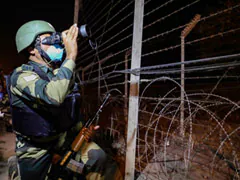Introduction:
The Indian Army has raised concerns over a surge in drone sightings across the Samba sector of Jammu and Kashmir (J&K), signaling potential security threats along the border. In an official statement, the Army confirmed multiple instances of unmanned aerial vehicles (UAVs) entering Indian airspace, prompting heightened surveillance and counter-drone measures. This development comes amid escalating tensions in the region, with security forces on high alert to thwart illicit activities linked to cross-border operatives.
Body:
Rise in Drone Activity: Key Observations
Over the past fortnight, the Samba district has witnessed a notable increase in drone movements, particularly near military installations and civilian areas. The Indian Army disclosed that these drones, suspected to originate from across the border, are likely being used for surveillance or smuggling arms and narcotics. “We have observed a pattern in these intrusions, often under the cover of darkness,” stated a senior Army official.
Security Measures and Counter-Drone Technology
In response, the Army has intensified anti-drone operations, deploying advanced radar systems and electronic warfare tools to detect and neutralize hostile UAVs. Recent upgrades include the induction of DRDO’s (Defence Research and Development Organisation) counter-drone systems, capable of jamming signals and intercepting rogue drones. Additionally, BSF (Border Security Force) personnel have been instructed to maintain round-the-clock vigilance, with shoot-on-sight orders for unauthorized drones in sensitive zones.
Historical Context and Regional Implications
This uptick in drone sightings mirrors previous incidents in Punjab and Jammu, where drones were used to airdrop weapons and drugs. Security analysts suggest that such tactics are part of a broader strategy to destabilize the region by bypassing traditional infiltration routes. The Ministry of Home Affairs (MHA) has flagged the growing use of drones by non-state actors, urging states to bolster their aerial defense mechanisms.
Civilian Concerns and Official Reassurances
Local residents in Samba have expressed unease over the repeated drone sightings, fearing their misuse for terrorist activities. The Army, however, has assured the public of robust countermeasures. “Our units are trained to handle these threats efficiently. Citizens should report any suspicious activity immediately,” emphasized a defense spokesperson.
Conclusion:
The Indian Army’s latest warnings underscore the evolving challenges posed by drone technology in conflict zones. With J&K remaining a focal point of geopolitical tensions, the need for cutting-edge defensive infrastructure and inter-agency coordination has never been more critical. As investigations into these incidents continue, security forces remain committed to safeguarding the region’s integrity while adapting to modern warfare tactics.



